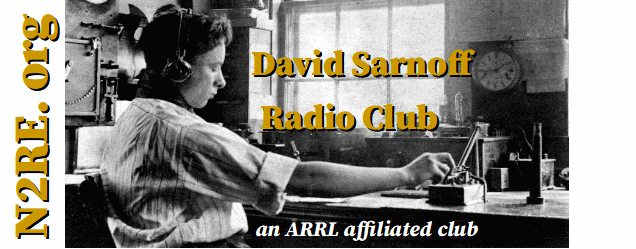Back in September 2022, as the MUF (Maximum Usable Frequency) was pushing up past 10 Meters, with sporadic-E on 6 Meters, Bob, N2LO reminded us that zip cord, also called lamp cord, or “parallel power cord”, could be used to make a simple, effective temporary antenna.
I made one out of zip cord purchased at Home Depot, with two pieces of house shingle for strain relief and one UHF panel connector screwed in to a fiber-cement shingle (which may not be weather-proof, but it is what I had handy.)

Here are Bob’s instructions (for 6 Meter version):
First cut the plug and sockets off the extension cords, if that is what you’re using, to minimize accidents! ( I’ve used AC plugs and sockets to cascade multiple extension cords and knotted the cords together to make longer RF feed lines. But, you can see the risk.)
234/50MHz ~= 4.7 feet per side.

Leave extra to tie a bowline on each end. Tie a reef or better yet a underwriter’s knot in the middle. Cut the feedline to an odd integer multiple of 12.5 feet long… (234/50)*4*(2/3C) ~= 12.5feet Or better yet, parallel two zip (Z0~=107 Ohms) cords for the feedline of ANY length and ~ 1/2 the loss.
You can use wire nuts if no soldering available. Many modern transceivers have 50 MHz & built in tuners.

Tie string the side of the dipole connected center conductor up as high as possible and tie string to the other end to stake to the ground or other support to form a sloper.
P.S. This technique was used to make a marine vhf antenna when the coax / antenna on the mast developed an open.

My NanoVNA says the SWR is better than 2:1 from 49.5 MHz to 52.4 MHz. Not bad for a couple of hours work!
Next project: Scale the lengths up to make a 10 Meter version:
Element length (each side) 234/28.4MHz = 8.24 feet (8 feet, 3 inches)
Matching section, per N2LO would be (234/28.4)* 4* (2/3) = 22 feet
Rearranging the equation for matching section length shows it as a multiple of a half wave length (twice the quarter wavelength in the equation for the element), adjusted for the zip cord’s velocity factor:
Zip Cord length L in feet = N * 0.66 * 234/ F, where 234 is free-space quarter wavelength for F in MHz.
N is any even number, but zip cord is lossy, so use a small value for N.
0.66 is the measured velocity factor for zip cord, about 2/3 the speed of light (C) … so one wavelength for energy traveling along the cord is only 0.66 of the free space wavelength.
Note that shortening the matching section to 10′ 10″ also works, with less feed-line loss.
If you have a way to measure resonance, tuning is easy. If the the resonant frequency is too low, it can be raised by cutting the ends off the antenna, shortening the dipole. Make make the antenna a bit longer than the design, and let the ends drape down perhaps 8″, and then check the tuning, snipping off an inch of each end until the resonance is moved up to the proper frequency. (I estimate that each inch is 0.5 MHz shift, so be careful!) If it is too high, split the zip cord more and pull through the center shingle. (Splitting it one more inch lowers resonance by a half a MHz for the 50 MHz antenna.) The matching section will be a bit shorter, but resonance is more important.

Here’s how I connected the zip cord ends to cotton (non conducting) rope– don’t use any clothesline with metal strands. Tying a bowline on the rope and then looping the antenna wire through the loop (as the rope is in the photo) would be more secure than this… but my quick knot worked for a test.
I pulled one end up into a tall tree, with the other loosely draped over to the house, coax connection down in the middle. I should have made a coil of several turns of coax to form a current balun, but I didn’t.
Observe all standard ham safety guidelines when putting this up. And remember it’s a TEMPORARY antenna.
Note that more information on zip cord antennas can be found at:
QST March 1979, pp. 31-32 “Zip-Cord Antennas: Do they work?” by Jerry Hall.
“Zip Cord Transmission Lines and Baluns” by Dr. Carol F. Milazzo, KP4MD https://www.qsl.net/kp4md/zipcord.htm
Good luck!
- Charlie N2CTW
